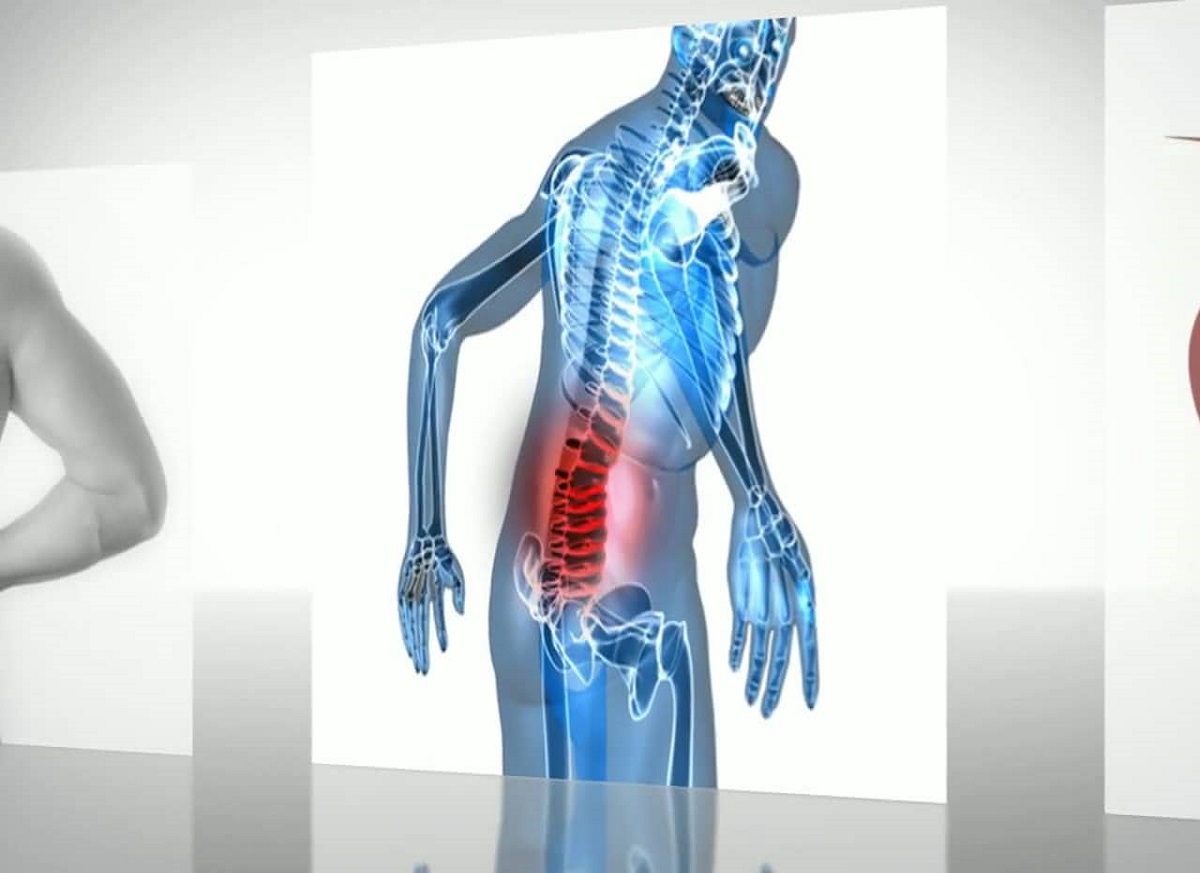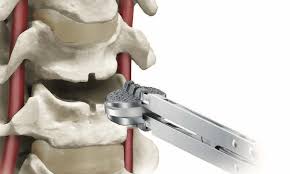
The surgery is performed using general anesthesia. A breathing tube (endotracheal tube) is put and the patient inhales with the help of a ventilator amid the surgery. Preoperative intravenous anti-microbial are given.
Patients are situated in the recumbent (lying on the back) position, for the most part utilizing a unique, radiolucent working table. The surgical district (stomach territory) is purified with a unique cleaning arrangement.
Sterile curtains are set, and the surgical group wears clean surgical clothing, for example, outfits and gloves to keep up a microscopic organism’s free condition.

A 3-8 centimeter (contingent upon the quantity of spinal circles to be supplanted) transverse or angled entry point is made just to one side of the umbilicus (paunch catch). The stomach muscles are delicately spread separated, however are not cut.
The peritoneal sac (containing the digestion tracts) is withdrawn (moved to the side) to the side, just like the vast veins. Unique retractors are utilized to permit the specialist to envision the foremost (front part) part of the intervertebral circles.
After the retractor is set up, x-ray is utilized to affirm that the proper spinal level(s) is recognized.
The intervertebral plate is then evacuated utilizing extraordinary gnawing and getting a handle on instruments, (for example, a pituitary rongeur, kerrison rongeur, and curettes). Exceptional distractor instruments are utilized to reestablish the typical stature of the plate, and additionally to decide the suitable size counterfeit circle substitution to be embedded. The counterfeit circle prosthesis is then deliberately put in the plate space. Fluoroscopic x-beams are taken to affirm that the prosthesis is in the right position.
The injury territory is normally washed out with sterile water containing anti-infection agents. The profound fascial layer and subcutaneous layers are shut with a couple of solid sutures. The skin can as a rule is shut utilizing extraordinary surgical paste, leaving an insignificant scar and requiring no wrap.
The aggregate surgery time is around 2 to 3 hours, contingent upon the quantity of spinal plates to be supplanted.
Most patients are generally ready to go home 2-4 days after surgery. Before patients go home, physical specialists and occupational advisors work with patients and educate them on legitimate systems of getting in and out of overnight boardinghouse freely.

Patients are told to abstain from bowing at the midsection, lifting (more than five pounds), and turning in the early postoperative period (initial 2-4 weeks) to maintain a strategic distance from a strain damage.
For more Information visit here:- https://www.docopd.com/en-in/lab
As with any intervention pre-operative planning and careful patient selection are imperative. A careful history should be taken followed by a thorough hip examination.
Common findings particularly in impingement include a reduced range of internal rotation and pain on internal rotation.
Any provisional diagnosis should be confirmed by imaging; however, many imaging modalities such as plain radiographs, CT and bone scanning have a low specificity for diagnosing intra-articular disorders.
MRI has proven to be extremely useful in this regard but still has limitations. Labral pathology is best diagnosed by MRI arthrogram.
Imaging is also essential for planning impingement surgery.
Anteroposterior (AP) pelvis and frog-leg lateral radiographs are commonly supplemented with 3D CT reconstructions in order to visualise the extent of any cam or pincer lesion.
During Hip Arthroplasty:
Hip replacement surgery can be performed traditionally or by using what is considered a minimally-invasive technique. The main difference between the two procedures is the size of the incision.
During standard hip replacement surgery patient are given general anesthesia to relax the muscles and put into a temporary deep sleep. This will prevent patient from feeling any pain during the surgery or have any awareness of the procedure. A spinal anesthetic may be given to help prevent pain as an alternative.
The doctor will then make a cut along the side of the hip and move the muscles connected to the top of the thighbone to expose the hip joint. Next, the ball portion of the joint is removed by cutting the thighbone with a saw. Then an artificial joint is attached to the thighbone using either cement or a special material that allows the remaining bone to attach to the new joint.
Patient will likely stay in the hospital for four to six days and may have to stay in bed with a wedge-shaped cushion between legs to keep the new hip joint in place. A drainage tube will likely be placed in patient’s bladder to help them go to the bathroom. Physical therapy usually begins the day after surgery and within days patient can walk with a walker, crutches, or a cane. Patient will continue physical therapy for weeks to months following the surgery.
From six to 12 months after hip replacement surgery, pivoting or twisting on the involved leg should be avoided. Patient should also not cross the involved leg past the midline of the body nor turn the involved leg inward and should not bend at the hip past 90 degrees. This includes both bending forward at the waist and squatting.
Consultant orthopaedic surgeon will provide some techniques and adaptive equipment that will help patient to follow any of the above guidelines and precautions while performing daily activities.
What Can I Do at Home After Hip Arthroplasty?
There are a few simple measures that you can take to make life easier when you return home after hip replacement surgery, including:
Patient should consult with the doctor before returning to such activities as driving, sexual activity, and exercise.